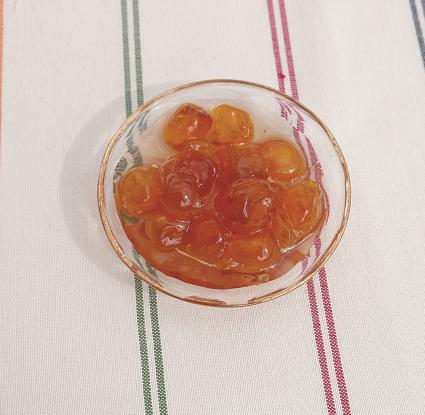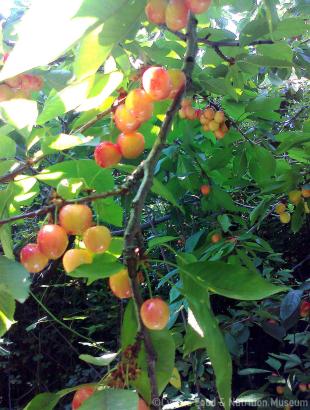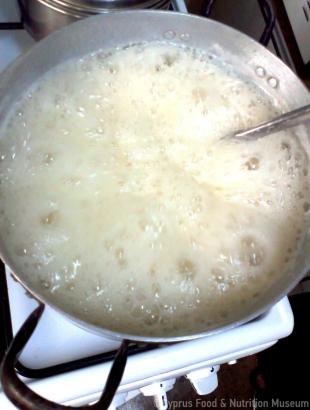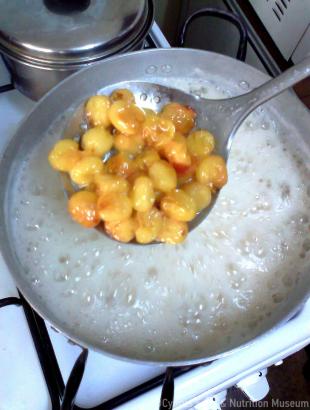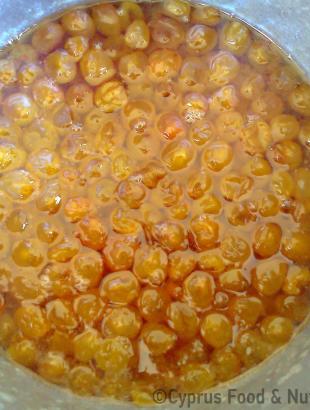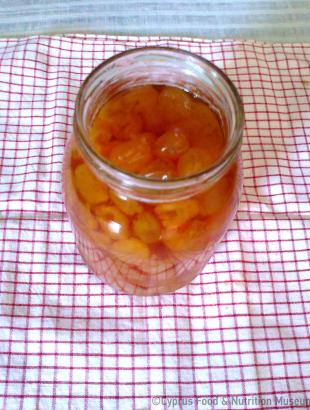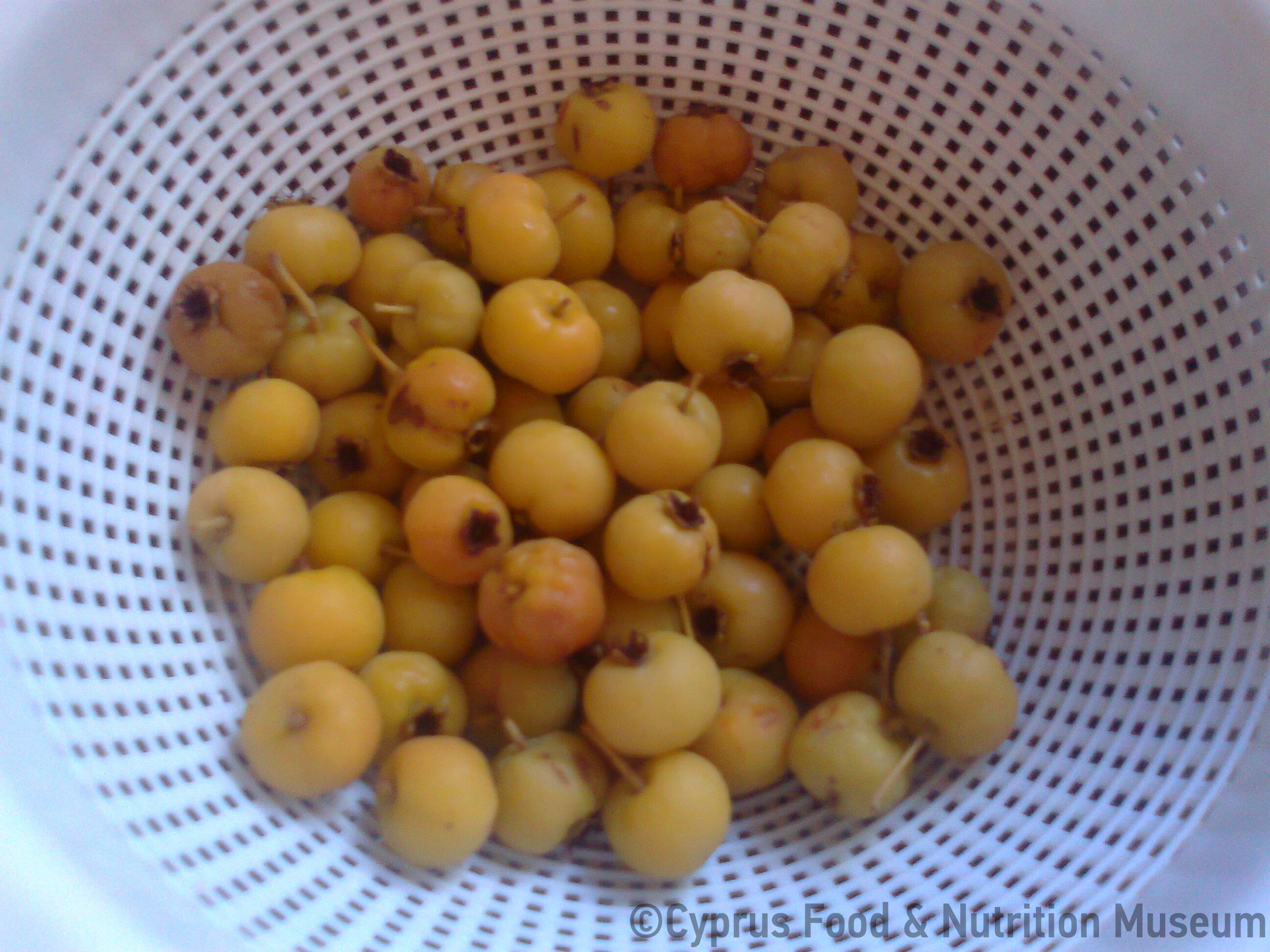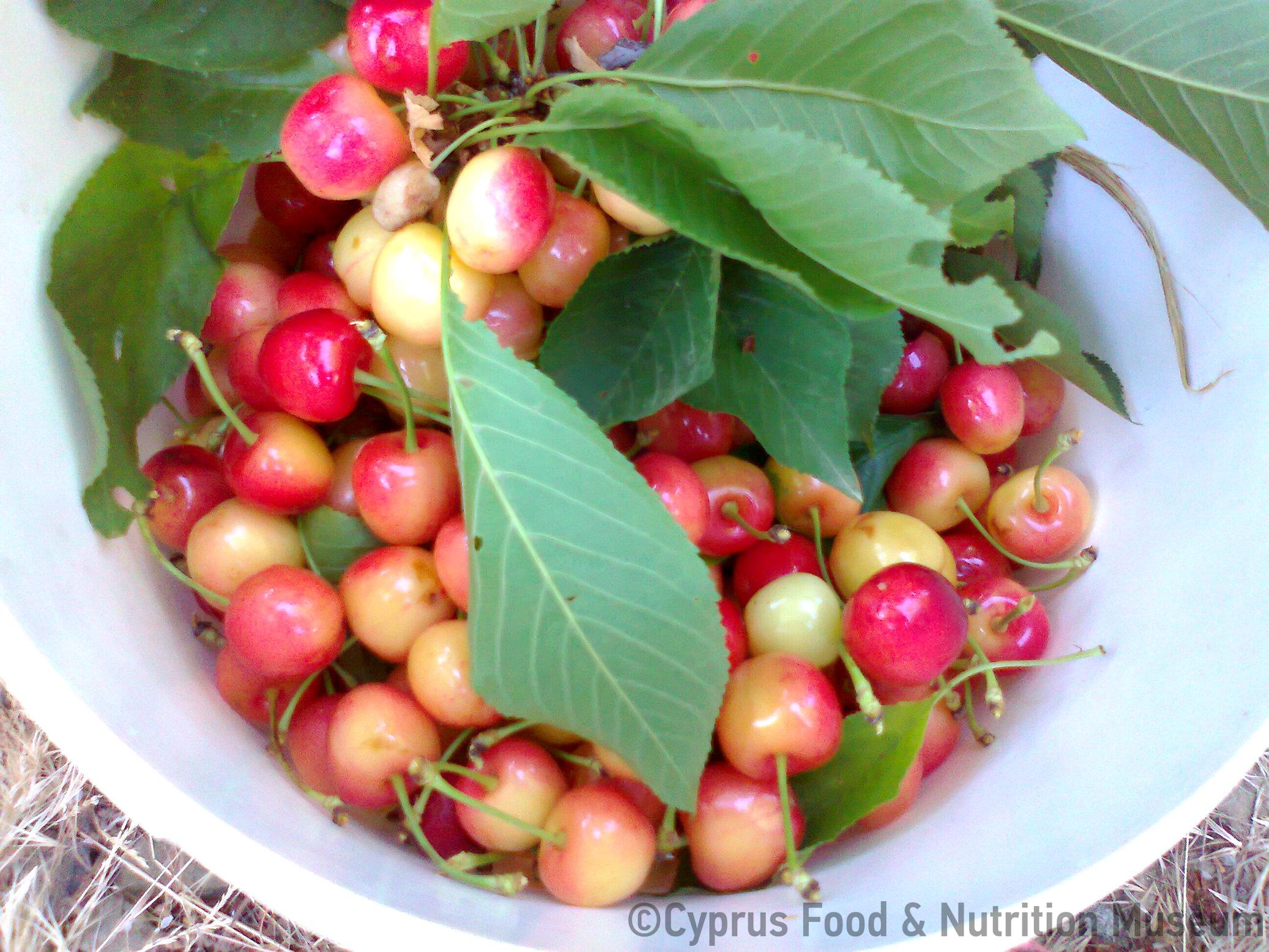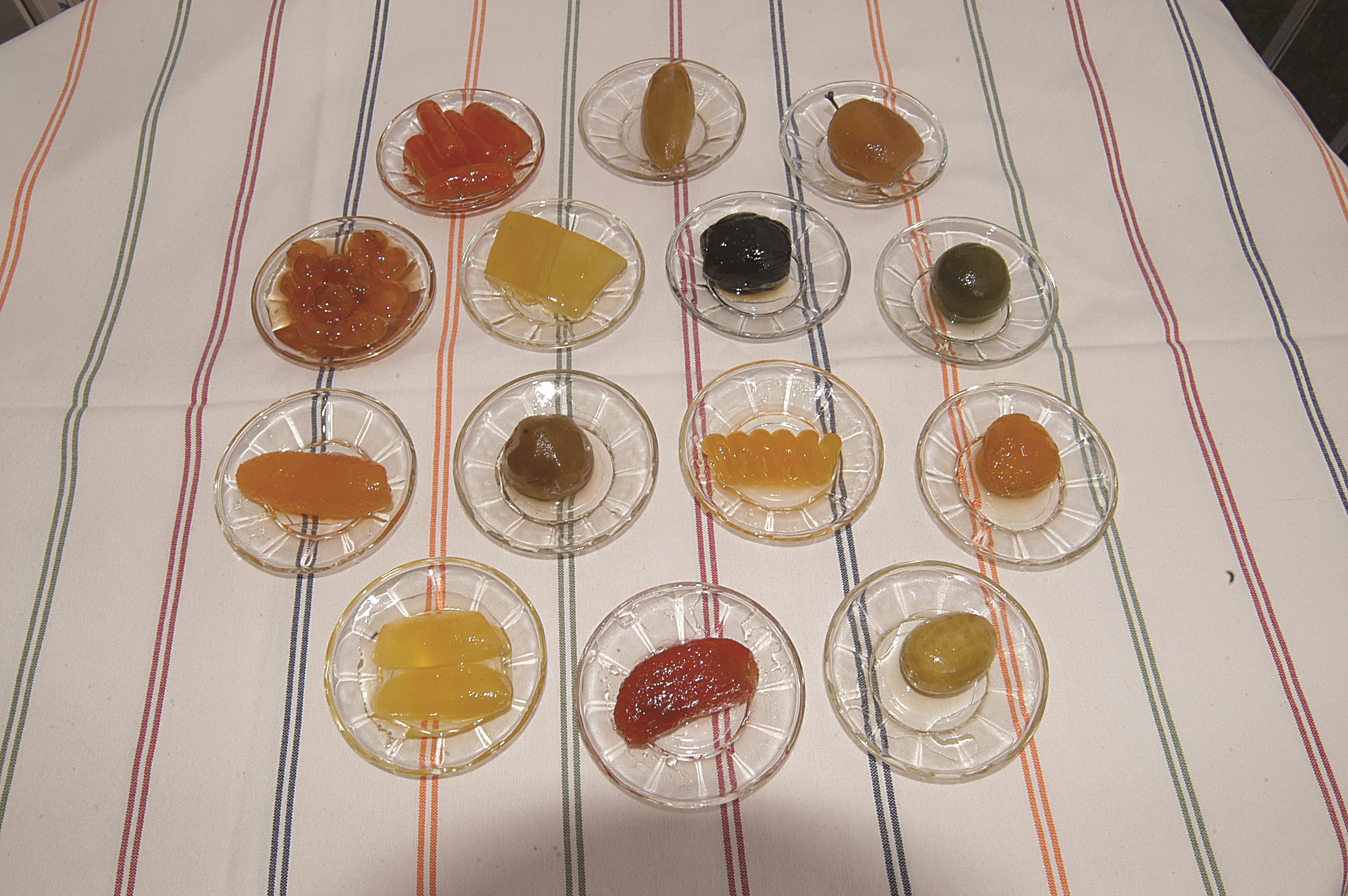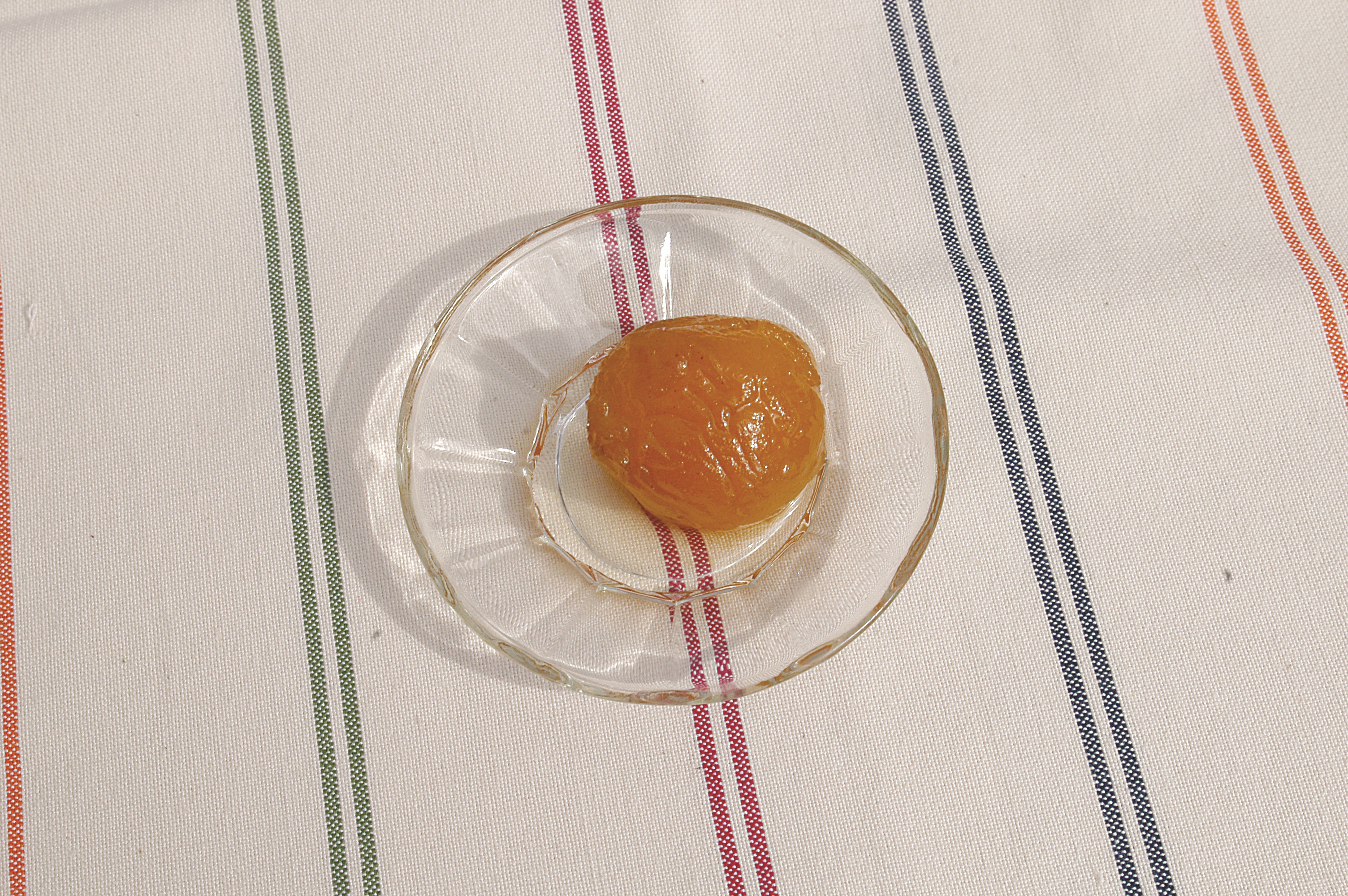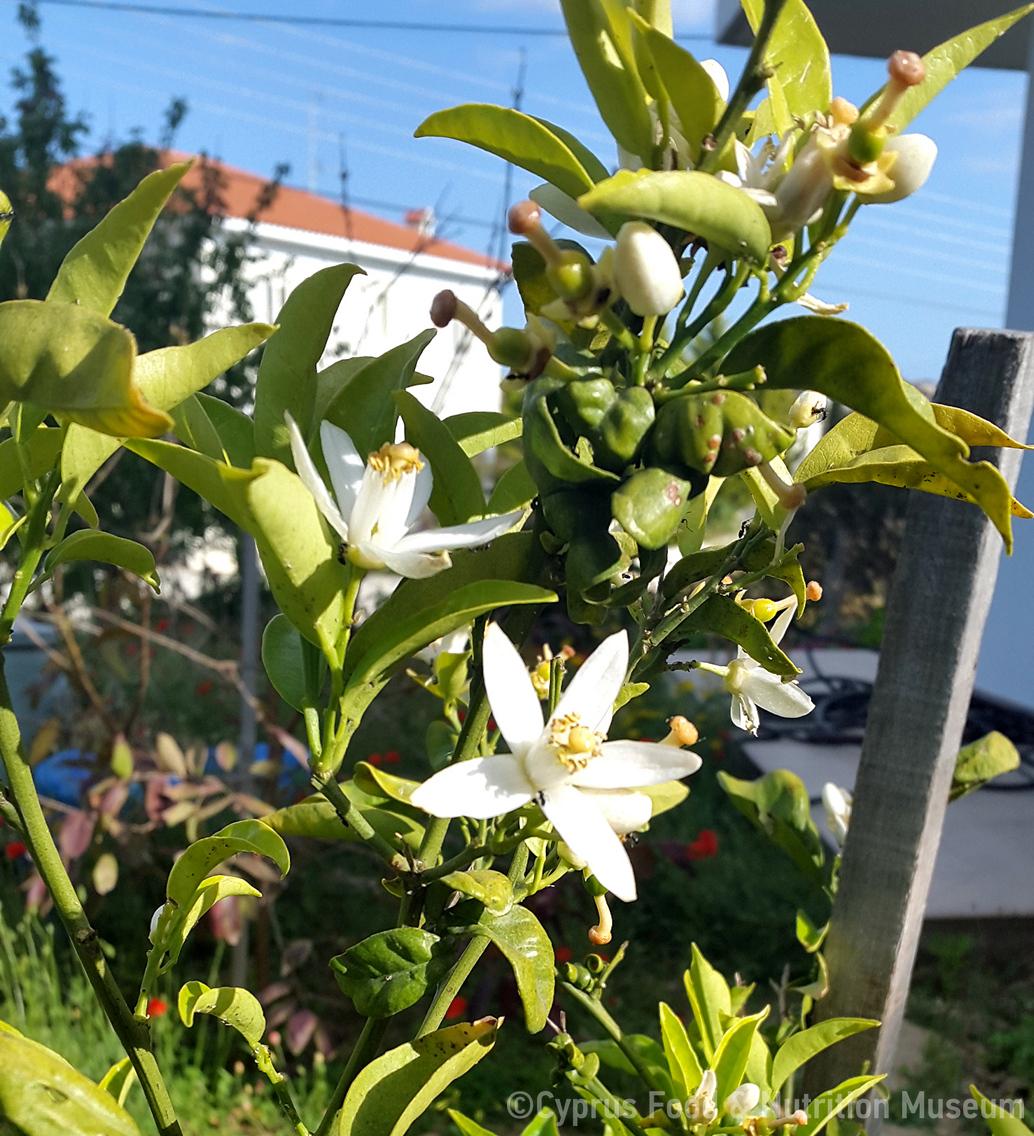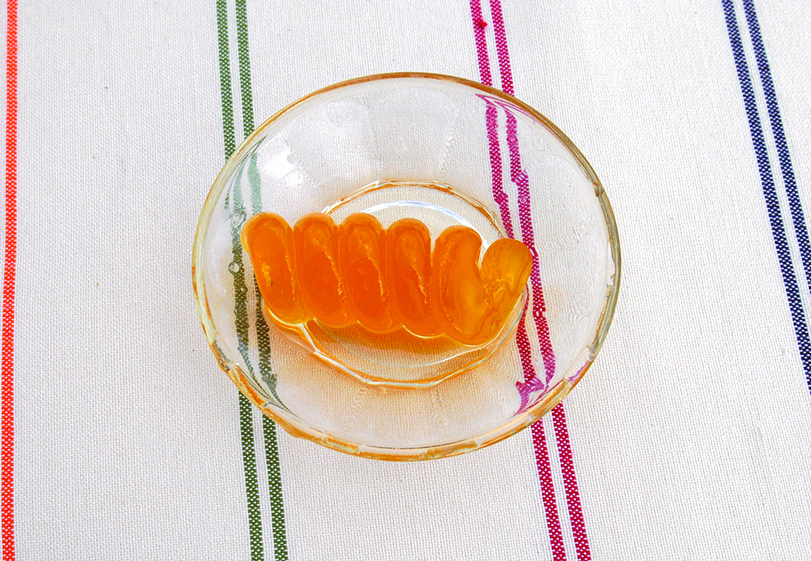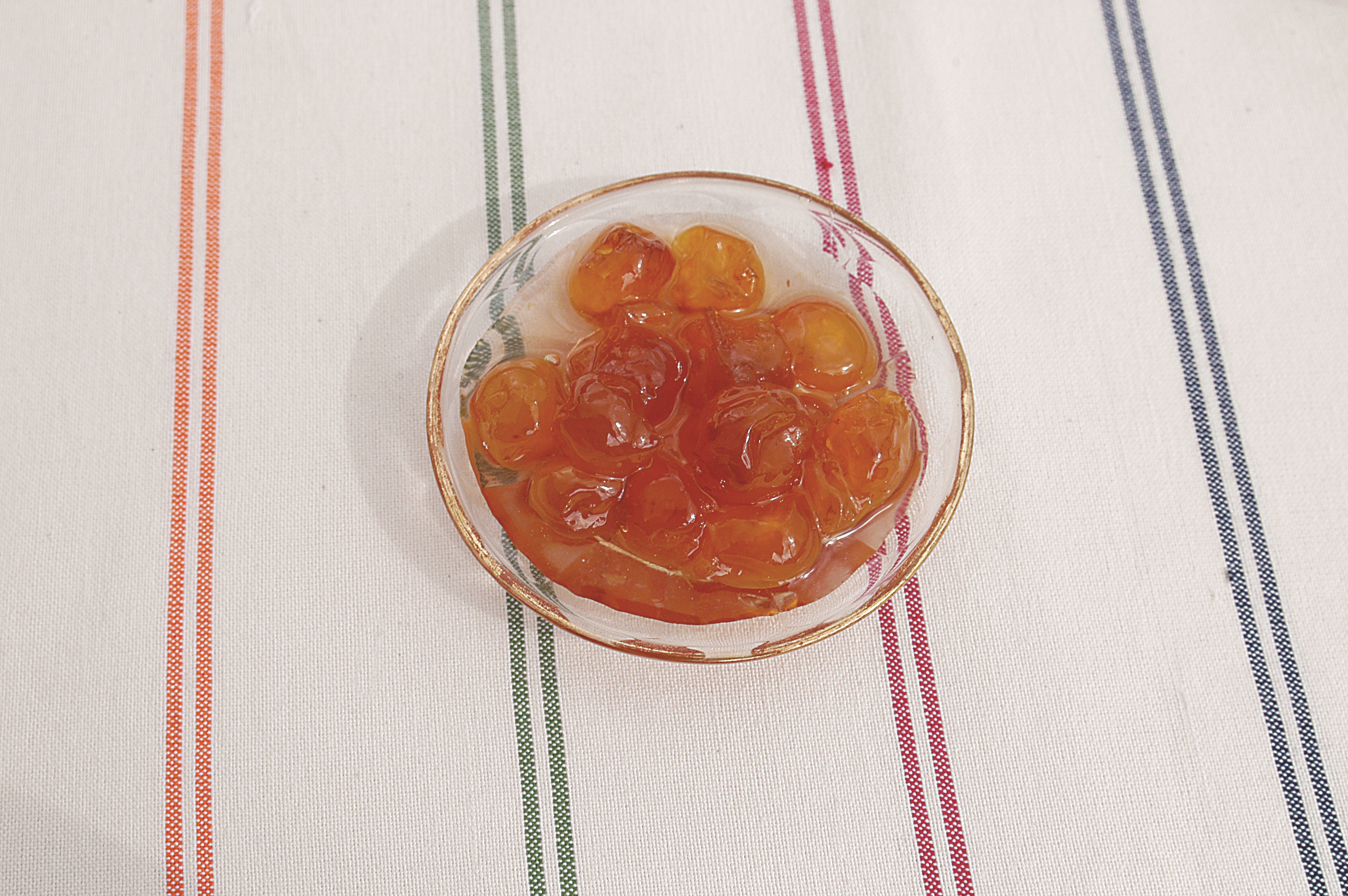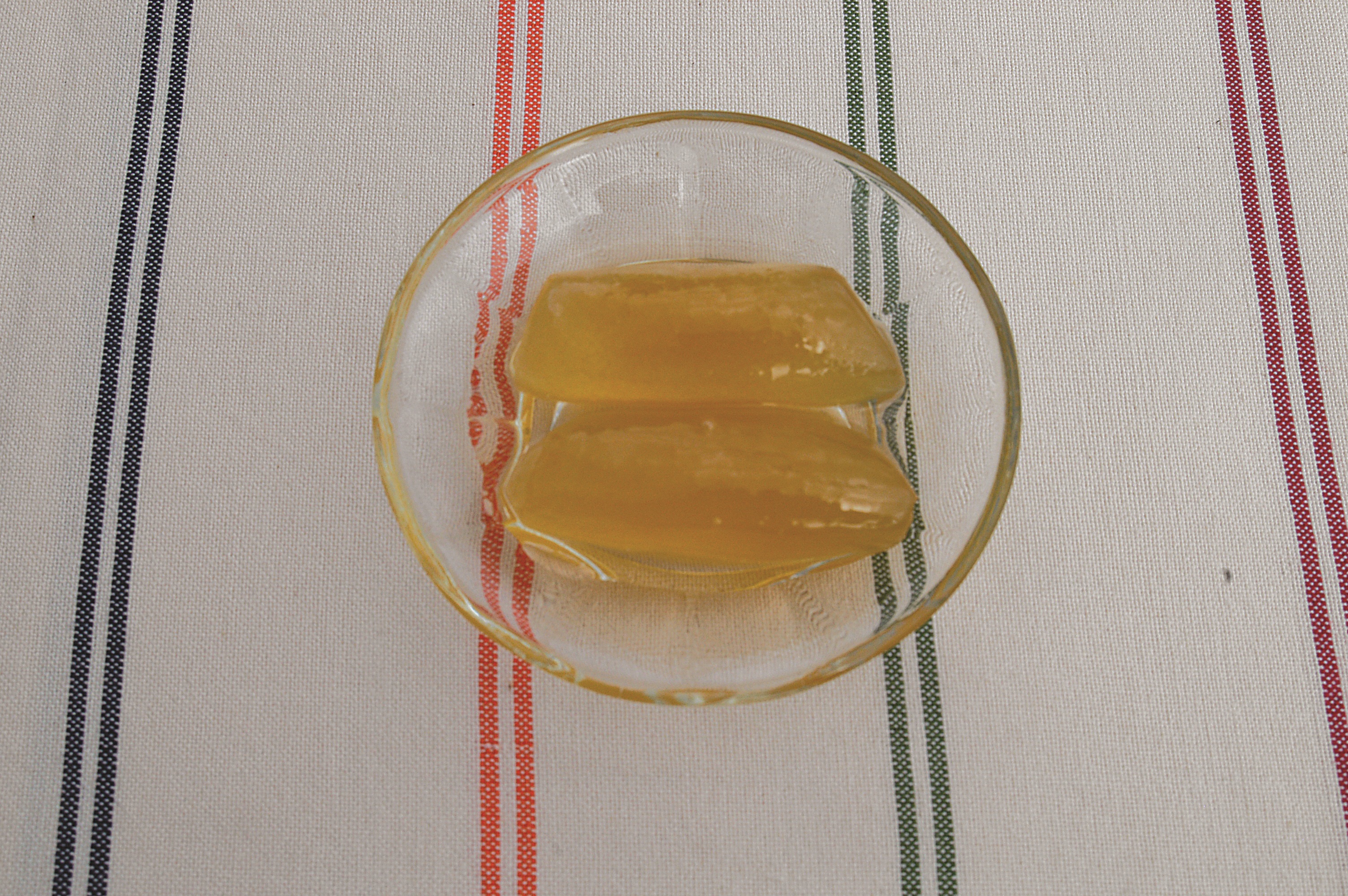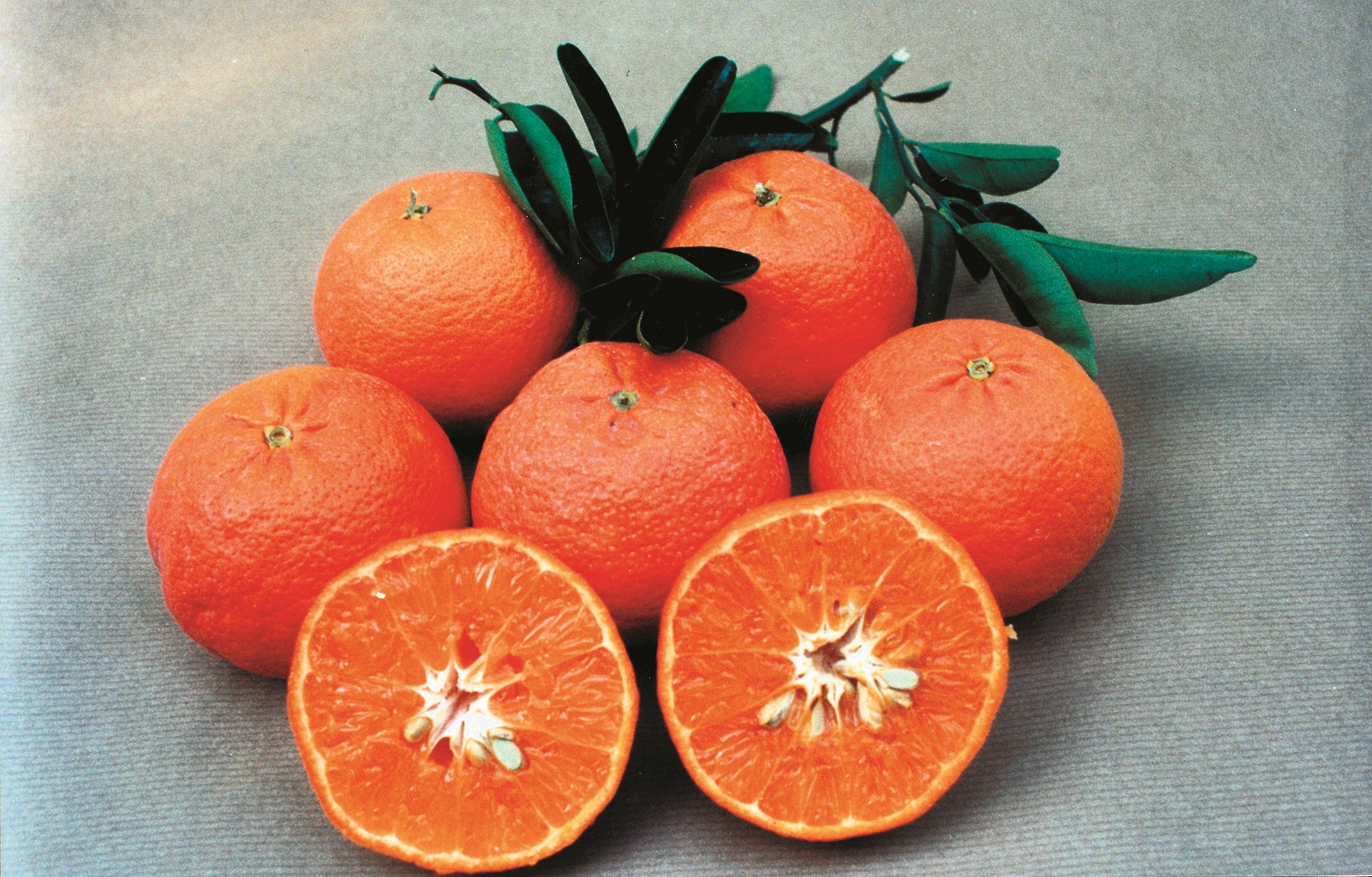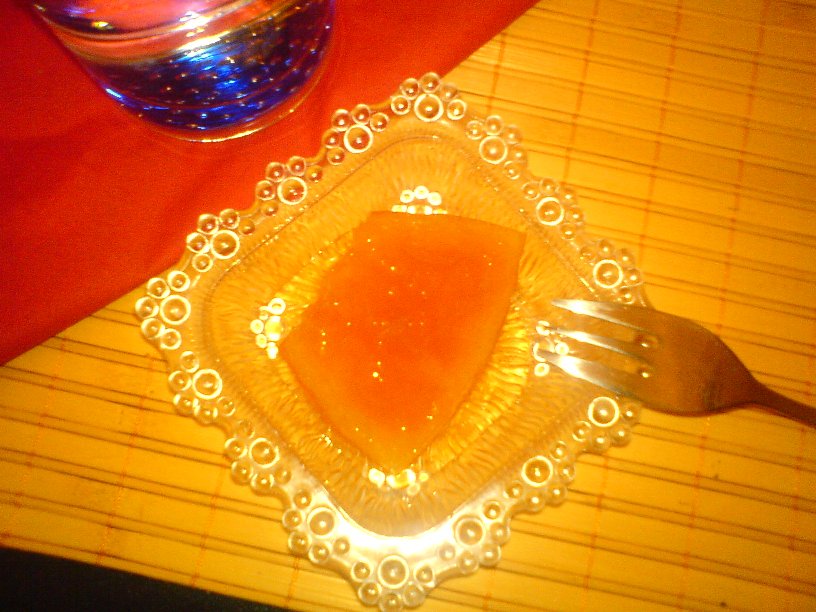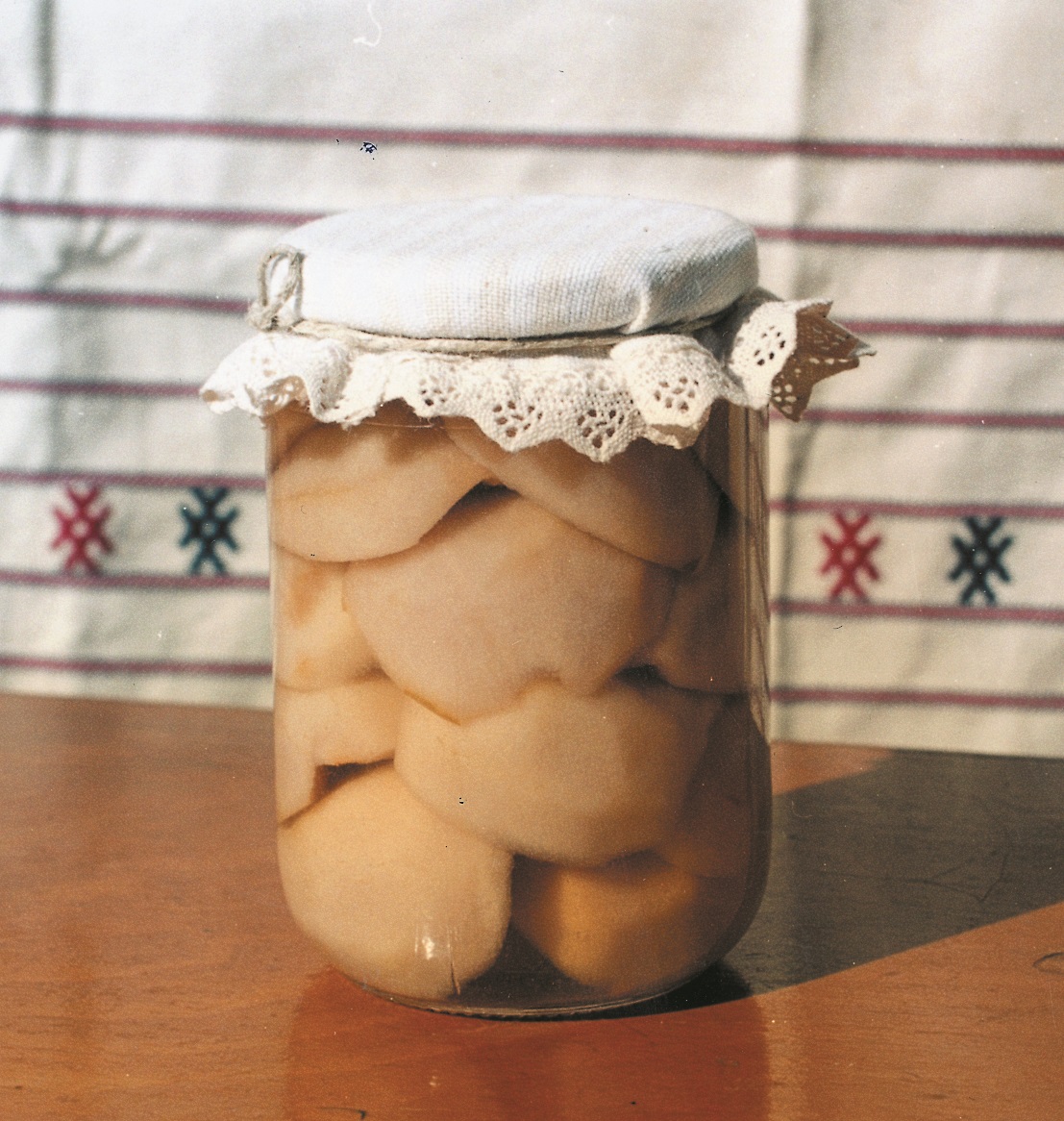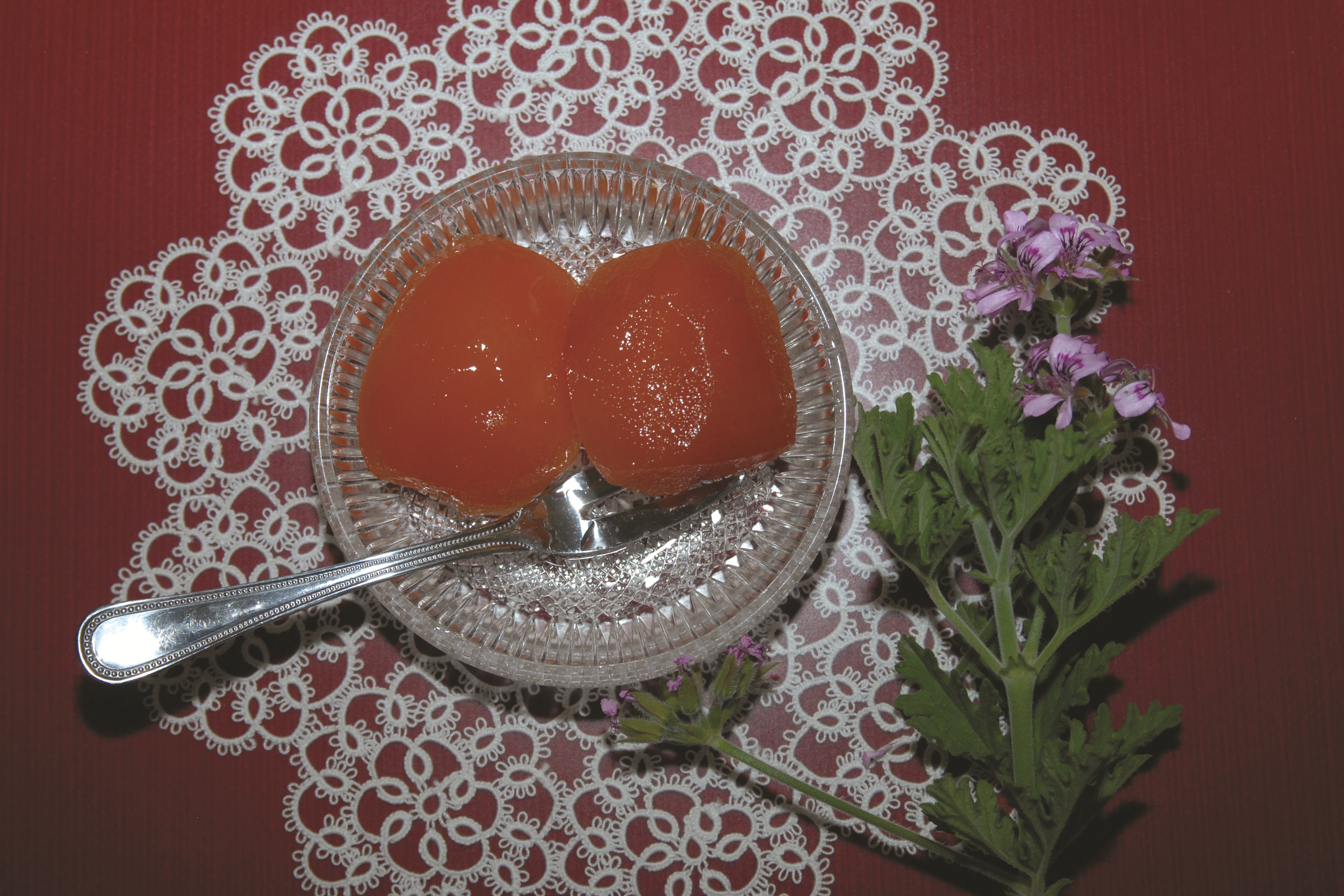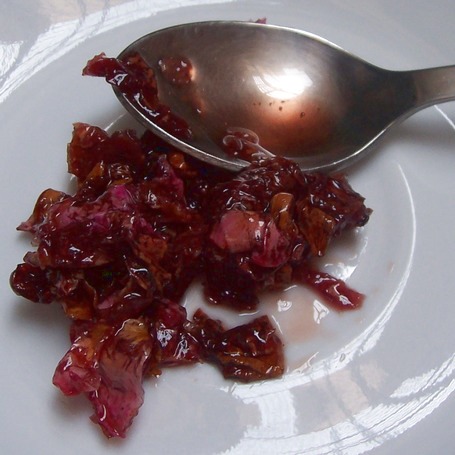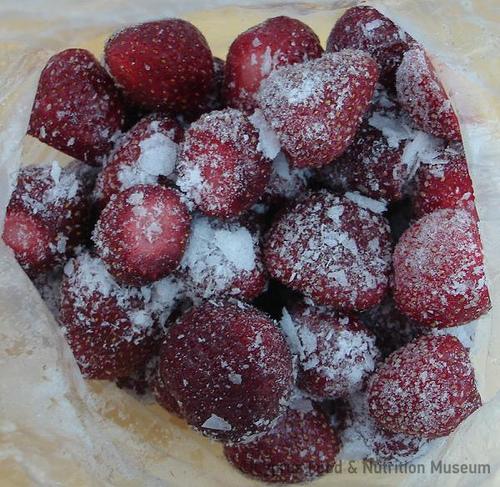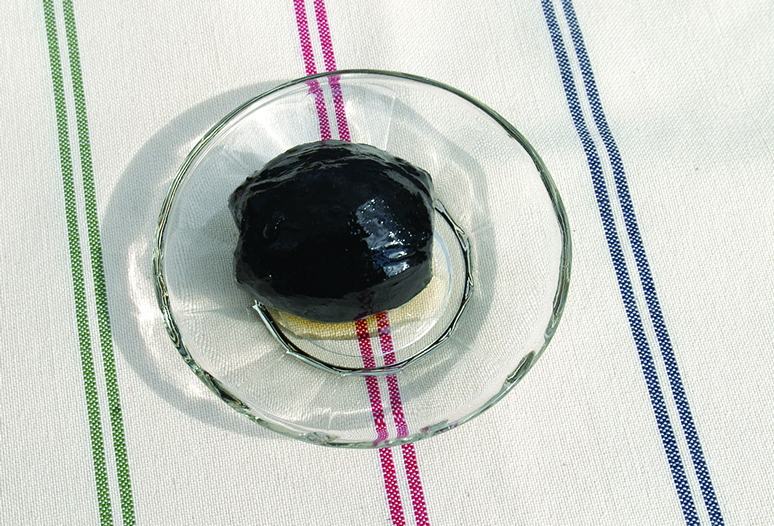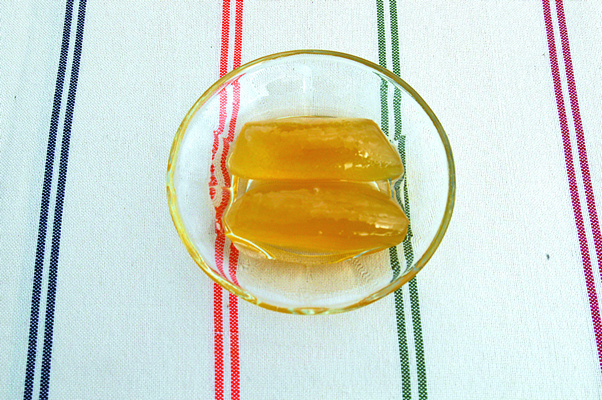Special tools are used today to remove the pits. In the past, women used metal hairpins.
Name - Recipe
Γλυκό του κουταλιού κεράσι.
Version A
1 kg of "French" cherries
1 kg of sugar
1 glass of water
1/2 glass of lime
1 small cup of lemon juice (for the lemonade)
3-4 leaves of rose geranium or vanilla
1 tbsp lemon juice
Version B
1,5 kg of white Napoleon cherries (not too ripe)
1 kg of sugar
1/2 litre of water
Juice of one lemon
1 sprig of rose geranium or a bit of vanilla
For the lime water:
2 litres of water
2 tbsp of lime
1 large tulle with very fine holes
Version A
Remove the stem from the cherries. In a basin, dissolve the lime in the water. Add the cherries and leave them for 2 hours. Remove them and wash them very well. Remove the pits with the special tool and place the cherries in a basin with water and lemon juice (lemonade) for 1-2 hours. In a pot, boil the sugar and water and once the syrup starts to bubble, remove it from the heat and leave it aside to cool. Drain the cherries very well and add them to the syrup. Boil them over high heat after adding the rose geranium. Let them boil until the syrup thickens, stirring and skimming them occasionally. Just before the syrup is ready, add the lemon juice, bring to a boil for 1-2 more minutes, remove from the heat and leave to cool. Fill the jars, cap them and store them. (MANRE 2009, p. 5)
Version B
Wash the cherries and carefully remove the stems and then the pits with a special tool or a hairpin. In a basin, dissolve the 2 spoonfuls of lime in 2 litres of water, stirring with a spoon. Strain the mixture into a large basin or large pot, through the tulle so as to obtain only a milky liquid. Add the pitted cherries to this liquid and leave them for 1-2 hours, stirring the liquid gently 2-3 times. Then rinse the cherries very well (about 8 to 10 times) until the water comes out clean and place them in a colander to drain. Combine the water and sugar in a pot and bring to a boil. From the moment the boiling starts keep boiling for 5 minutes. Add the cherries and boil for another 5 minutes, remove from the heat and leave the pot aside for 24 hours. On the following day, boil the cherries again until the syrup thickens and just before the end, add the lemon juice and the rose geranium or the vanilla. When the syrup is ready, remove from the heat and begin to shake the pot right and left in a circular motion several times until it cools down. (Kythraiotou 2013, 62-63)
Boiling.
Boiling in syrup.
How do we know when the syrup is ready: Place some syrup in a spoon and let it drip away in the pot. When the syrup flows away easily, it means it is still watery and not ready. Keep on boiling for a few minutes and test again until the flow separates into drops. When a final drop remains hanging from the spoon, it means that the density is right and the syrup is ready. If not, that means that the syrup is not ready and needs a bit more boiling. Repeat the testing procedure again until the syrup has the right consistency.
If the syrup is properly thickened, then the spoon sweet can be preserved for a very long period of time in a cool, dry place without having to be kept in a refrigerator. (MANRE, 2009)
In the Marathasa region, white-fleshed cherries of the Napoleon variety are usually used for the preparation of the spoon sweet (Kythraiotou 2013, 41).
Functional and symbolic role
This is the most popular spoon sweet in Marathasa (Kythraiotou 2013, 41).
Additional information and bibliography
The valley of Marathasa and more specifically Pedoulas village have been the main cherry-growing areas in Cyprus for several decades. The hard cherries of the region with their firm and juicy flesh are sought after in summer, but the white-fleshed ones are also the exclusive variety for the preparation of spoon sweets (Kythraiotou 2013, 41-42).
Ministry of Agriculture, Natural Resources and Environment, Department of Agriculture (2009). Traditional spoon sweets and jams, Press and Information Office, Nicosia.
Kythraiotou, F. (2013). Gastronomic guide of Marathasa, Ministry of Education and Culture - Pedagogical Institute, Nicosia.
Varvara Yangou, Petroulla Hadjittofi

